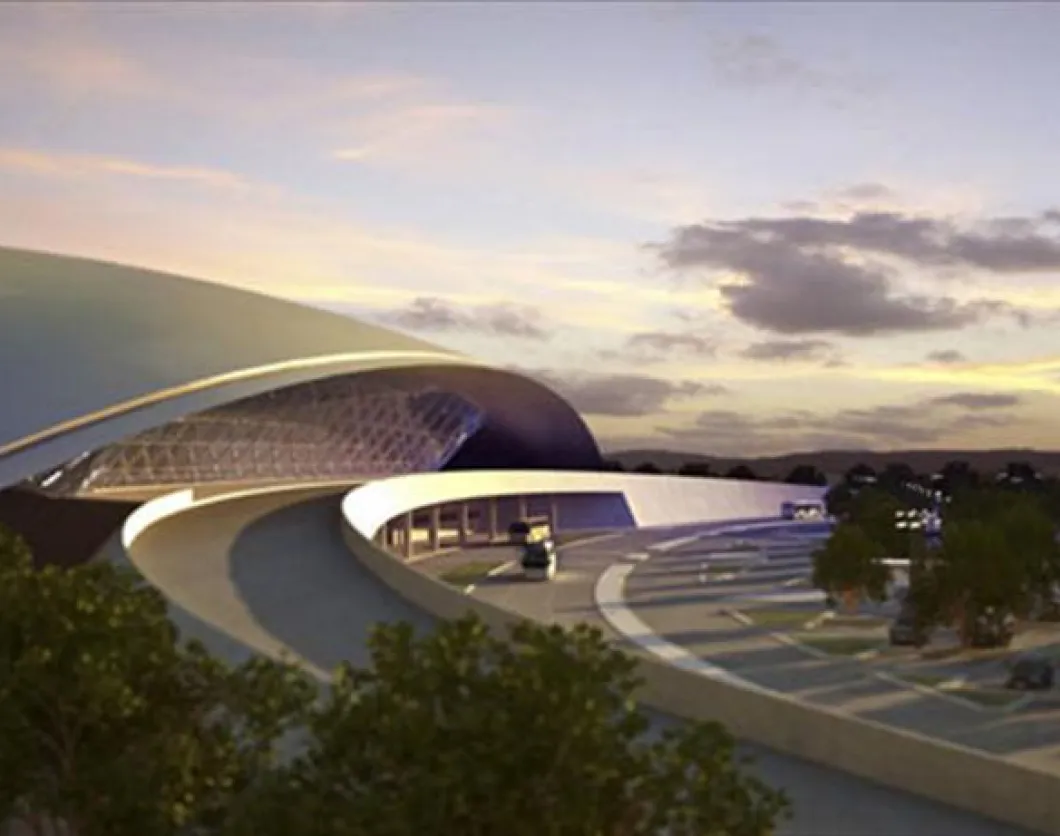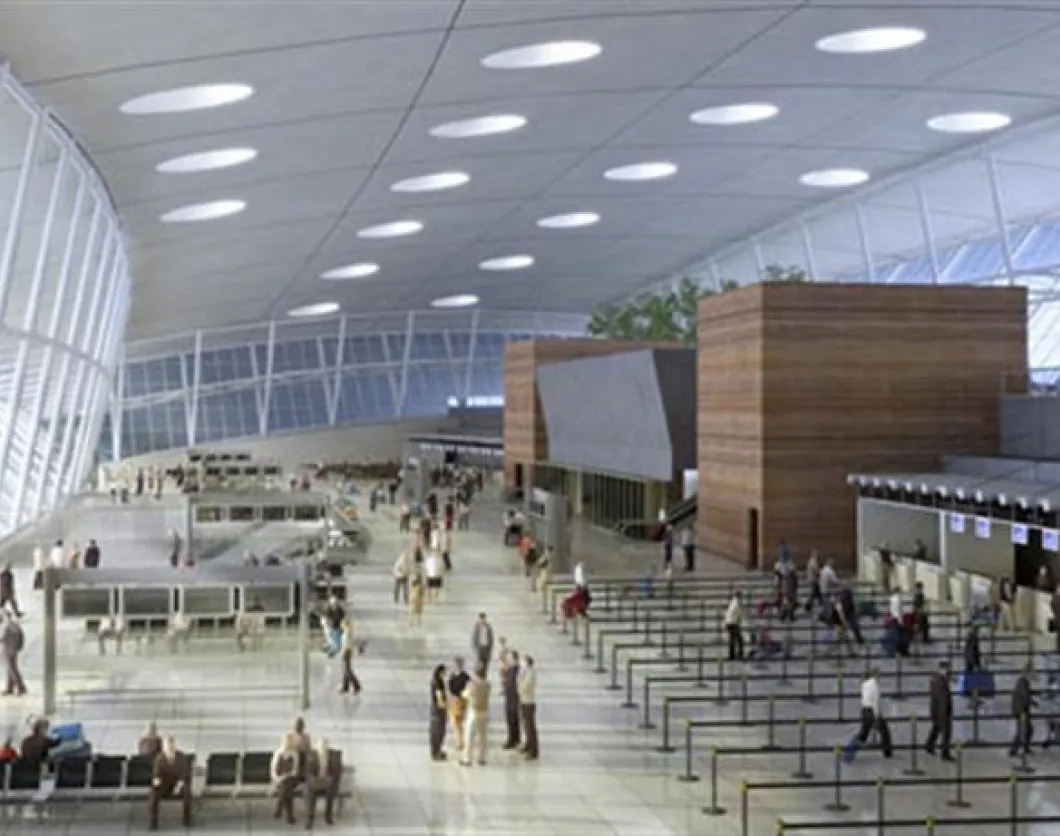With an investment of 165 million dollars, a successful process that now represents the New Airport Terminal of Uruguay has been accomplished: a project designed by the renowned Uruguayan architect Rafael Viñoly.
The inauguration of the new Airport (December 2009) not only symbolizes a milestone for the country in terms of investment, architecture, high quality of services, vanguard and technological innovation, it also constitutes an emblematic bid that makes us proud and honors the gateway to Uruguay.
The project, today a reality, has become a landmark that represents Uruguay both from the spatial point of view as well as a symbol. A big roof of double curvature extends for almost 400 meters all along the length of the building, overhanging the limits of the building itself to rest on the ground. This roof has a maximum width of more than 130 meters and shelters the Departure Lounge, Check-in Hall and the Belvedere Terrace. The roof has a total surface of about 4 hectares (4,000 square meters).
In the architectural design the main objective was to generate great transparencies and a feeling of amplitude in all the public areas. To achieve this concept, the upper part of the building has an extensive and surrounding leaning glazing of almost 8,000 square meters that allows the optimization of the use of natural light and offers great open visuals of the platform and the whole airport space.
The new Airport building is located in a parallel line to the main runway (06-24) which was extended to 3,200 meters of length to allow Intercontinental Flights operation. Altogether with the New Terminal a new platform was also built to allow the embarkment and disembarkment of passengers by means of four telescopic bridges connected directly to the building, these bridges are able to service any aircraft from a small plane as the CRJ-900 to an Airbus 380.
The New Terminal evolves into two main levels with separated and different accesses to service the flow of passengers at Departures and at Arrivals respectively. Ample sidewalks provide space for the passengers’ access from or into private cars, taxis and buses. This layout with separated, independent levels allows the creation of exclusive and separated areas for departures and arrivals, thus avoiding passengers and visitors crossovers. Likewise, the Belvedere Terrace was created with the objective of creating an area where the passengers and visitors could relax in a peaceful environment.
The building occupies a surface of more than 45,000 square meters and has 8 boarding gates, 4 of which have connecting telescopic air bridges.
A special baggage handling system is provided for Departures consisting of automatic conveyor belts that take the baggage from the check-in area to the departures platform. This system of conveyor belts takes the baggage first to the technical area where a series of different controls and supervisions are carried out for security reasons through automatic X-ray machines. Regarding the baggage handling system at Arrivals, the New Terminal has 3 baggage claim carrousels. One of them is a double carrousel to serve long haul flights. The New Airport is accessed from National Route 101.
The whole Airport complex is divided in three distinctive clearly separated sectors. The central sector comprises the public vehicle parking space with an approximate capacity for 1,200 vehicles which almost triplicates the capacity of the old terminal.
The New Terminal is able to handle up to three times more the volume of passengers, compared to the old terminal, which amounts to 4 million and a half users per year.
In this way, one of the most important projects of the country is completed, respecting the concept that, from the start of the concession it has fulfilled all of the expected requirements, as the extension and reconstruction of the runways, completing an optimal building structure that places us strategically as the HUB del MERCOSUR.









